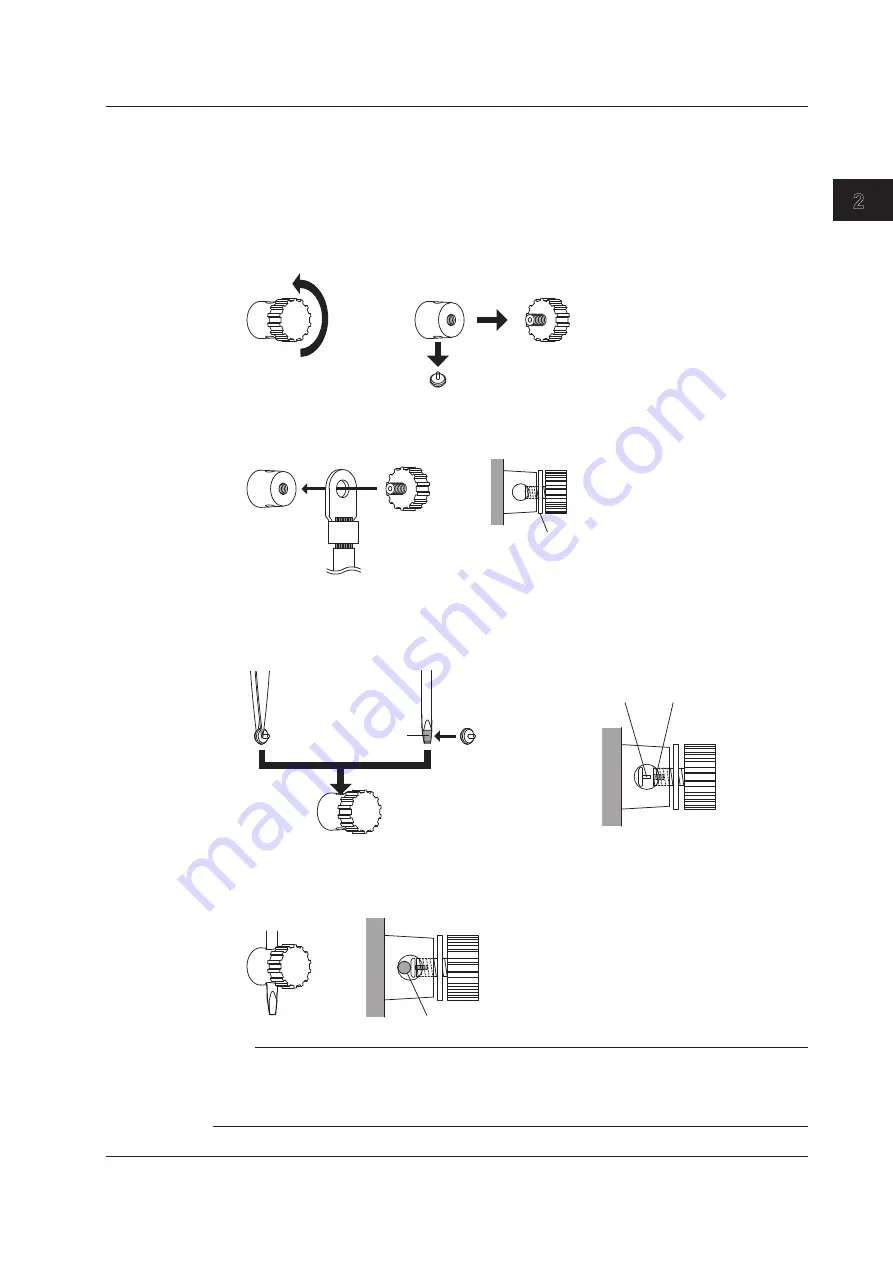
2-23
IM WT310E-02EN
Making Preparations for Measurements
1
2
3
4
5
6
7
App
Index
Connecting to a Round Crimped Terminal
To connect a cable with a round crimped terminal to a current input terminal, follow the procedure
below. Note that once the stopper pressed into the knob is removed, it will easily come off if it is
used again. Have a new knob and stopper ready before you remove the stopper.
1.
Turn the current input terminal knob to loosen it. If the knob becomes difficult to turn, apply
more force to turn it further. Inside the terminal base, the stopper for the knob will disconnect
from the screw portion of the knob, and the knob will become easier to turn.
Current input terminal
Terminal base
Knob
Stopper
2.
Insert the screw of the new knob into the crimped terminal, and attach the knob to the terminal
base. Tighten the knob until the tip of the knob screw is slightly visible from the hole in the
terminal base.
Crimped terminal
3.
Use one of the following methods to insert the new stopper into the terminal base and hold it in place.
• Hold the stopper with tweezers and insert it into the terminal base.
• Wrap adhesive tape around a flathead screwdriver so that the adhesive side of the tape faces
outward, then attach the stopper to the adhesive tape.
Flathead screwdriver
Tweezers
Adhesive tape
Stopper shaft
Center hole
4.
Align the shaft of the stopper with the hole in the center of the knob screw. Twist the knob until
the shaft of the stopper enters all the way into the center of the screw.
If the shaft of the stopper doesn’t enter all the way into the screw even after you tighten the knob, insert the
shaft of a screwdriver into the hole in the terminal base, and twist the knob.
Flathead screwdriver shaft
Note
When using a crimped terminal with a measurement cable, be sure to use a crimped terminal that matches
the size of the cable and to crimp the terminal to the cable using the appropriate crimping tool for the
terminal. For precautions about using crimped terminals and crimping tools, see the manuals for the crimped
terminal and the crimping tool that you are using.
2.9 Wiring the Circuit under Measurement for Direct Input
















































